44 Famous European Seafood Soups: A Flavorful Ocean Journey
European seafood soups have warmed bellies and delighted palates across countless coastal regions for generations.
Maritime traditions deeply influence these rich, complex culinary creations that reflect local ingredients and cultural heritage.
Generations of fishermen and home cooks have perfected techniques passed down through family recipes.
Coastal communities along rocky shorelines and Mediterranean waters developed unique approaches to transforming fresh seafood into comforting liquid meals.
Each recipe tells a story of regional identity, connecting people through shared culinary experiences.
Ingredients sourced directly from surrounding waters transform simple preparations into extraordinary gastronomic expressions.
These soups represent more than nutrition; they embody cultural memories and geographical connections.
Dive into the delectable world of 44 famous European seafood soups that promise to tantalize your taste buds:
European Seafood Soups to Warm Up
Coastal traditions come together in steaming bowls of European seafood soup. The combination of fresh catch and aromatic broth is pure comfort.
Salmon Soup (Lohikeitto)
Lohikeitto represents a luxurious Finnish salmon soup with velvety cream and hearty fish stock that transforms fresh salmon fillets into a warming Nordic delicacy.
Cold Scandinavian winters inspire this rich soup combining tender salmon chunks with soft diced potatoes and sweet carrots.
Nordic kitchens carefully simmer these ingredients in a buttery broth enhanced with fresh dill.
Cream adds smooth richness to the soup's texture.
Finns typically serve lohikeitto with crisp rye bread or bright lemon wedges.
Scandinavian culinary traditions deeply respect seafood preparation techniques.
Generations have perfected this comforting winter meal across Finland's coastal regions.
Finnish Fish Soup (Kalakeitto)
Kalakeitto stands as Finland's cherished seafood soup, blending fresh fish and seasonal vegetables in a creamy, aromatic broth that captures Nordic culinary traditions.
Salmon, rainbow trout, vendace, pike, perch, zander, and burbot form the protein base of this comforting dish.
Diced carrots, potatoes, onions, and leeks contribute depth and texture to the soup's hearty profile.
Butter and cooking cream (ruokakermaa) provide a rich, smooth consistency that defines its character.
Dill, allspice, bay leaves, salt, and pepper infuse the broth with a delicate, warming flavor.
Finnish families have enjoyed this soup for generations, making it a quintessential winter meal.
Cullen Skink
Cullen skink is a hearty Scottish soup originating from Cullen, a northeastern fishing village, featuring smoked haddock as its star ingredient.
Scottish fishermen traditionally prepared this creamy soup with local white fish, milk, potatoes, and leeks.
Northeastern Scotland's coastal communities perfected the recipe over generations, transforming simple ingredients into a comforting meal.
Arbroath smokies often enhance the soup's rich, smoky flavor, though other smoked white fish work equally well.
Restaurants and home cooks serve this warming dish as a satisfying starter or main course.
Scottish diners frequently enjoy Cullen skink with a crisp white wine or traditional Scotch whisky.
Its smooth texture and robust flavor reflect the region's maritime culinary heritage.
Coastal communities continue to celebrate this classic soup as a testament to Scotland's seafood traditions.
Bisque
Bisque is a luxurious French seafood soup renowned for its velvety texture and complex flavor profile, traditionally crafted with roasted shellfish like lobster or crab.
Culinary experts trace its origins to 17th-century French coastal regions, where fishermen ingeniously transformed limited ingredients into a rich, creamy delicacy.
Maritime regions around the Bay of Biscay likely influenced its development, with some historians linking the name to the method of cooking shellfish twice.
Roasting shellfish before simmering intensifies the soup's depth, creating an extraordinary base enhanced by cream, cognac, and carefully selected spices.
Authentic preparation involves extracting maximum flavor from shellfish shells, transforming them into an intensely aromatic broth.
Classic versions often include whole or pureed shellfish, lending a luxurious consistency.
Irish Seafood Chowder
New England clam chowder are creamy seafood soups packed with tender chunks of fresh seafood and hearty vegetables simmered in a rich, velvety milk base.
Maritime fishermen originally crafted this iconic American soup using local catch and simple ingredients available in coastal Massachusetts.
Restaurants across New England proudly serve variations featuring classic combinations of clams, potatoes, onions, and cream.
Fresh clams provide the signature briny flavor while thick cream creates a luxurious texture.
Chopped bacon often adds smoky depth to the soup's complex profile.
Traditional recipes include white or yellow potatoes cut into small cubes.
Chefs typically garnish bowls with fresh parsley and oyster crackers for added crunch.
Seasonal ingredients determine subtle variations in this beloved regional specialty.
Bouillabaisse
Bouillabaisse is a legendary Provençal seafood stew born from Marseillaise fishermen's resourcefulness in transforming their daily catch into a culinary masterpiece.
Mediterranean fishers originally crafted this dish using unsellable fish, creating a rich broth with multiple types of local seafood.
Marseille restaurants now serve sophisticated versions ranging from modest 50-euro meals to extravagant 200-euro experiences.
Tomatoes, fennel, and garlic provide deep flavor complexity to the broth.
Serving involves separating the fish from the broth, with diners typically enjoying the soup first followed by the perfectly cooked seafood.
Restaurants often accompany bouillabaisse with rouille, a spicy mayonnaise-like sauce, and crusty bread for dipping.
Psarosoupa
Psarosoupa embodies Greek maritime cuisine's essence, transforming fresh fish and vegetables into a comforting Mediterranean soup with remarkable depth.
Fishermen traditionally prepare this robust dish using firm-fleshed varieties like red mullet, snapper, cod, or red gurnard caught in local waters.
Vegetables such as carrots, celery, onions, leeks, garlic, and potatoes form the soup's aromatic base, creating a rich flavor profile.
After poaching the fish, cooks remove it and further simmer the broth with rice, adding complexity to the liquid.
Mediterranean kitchens elevate the soup's texture by whisking an egg with lemon juice and gently incorporating it into the hot broth.
Greeks serve psarosoupa as a standalone meal, highlighting the simplicity and freshness of Mediterranean ingredients.
Fiskesuppe
Fiskesuppe is Norway's quintessential maritime soup brimming with ocean-fresh seafood and creamy richness.
Nordic fishermen traditionally crafted this warming broth using freshly caught fish, shellfish, and seasonal root vegetables simmered in butter, milk, and cream.
Coastal communities perfected the recipe over generations, transforming simple ingredients into a deeply satisfying meal.
Coastal Norwegian regions contribute unique variations to this beloved national dish.
Fishermen would often prepare this soup using their day's catch, creating a resourceful and nourishing meal.
Fresh herbs and a bright splash of lemon juice elevate the soup's complex flavor profile.
Norwegians enjoy fiskesuppe as a comforting winter staple that celebrates their culinary heritage.
Acorda De Marisco
Acorda de marisco exemplifies Portuguese culinary creativity by transforming simple bread into a hearty seafood dish loaded with flavor.
Originating from traditional Portuguese cuisine, this unique recipe blends crusty bread mashed with olive oil, sautéed onions, and fresh cilantro.
Shellfish like shrimps, cockles, or clams provide rich maritime depth to the bread mixture.
Eggs are vigorously stirred into the base, creating a thick, satisfying texture that binds ingredients together.
Generous seasoning ensures each spoonful bursts with robust flavors and marine essence.
Shelled shrimp and cilantro garnish the dish, adding visual appeal and fresh aromatics.
Cooks typically serve this rustic meal warm, allowing diners to experience its complex layers of taste.
Acorda de marisco represents a perfect balance between humble ingredients and sophisticated preparation.
Ciorba De Peste “Ca-N Delta”
Ciorba de peste "ca-n Delta" embodies Romanian culinary tradition through its distinctive method of serving whole fish soup separately from fish chunks, creating a unique dining experience.
Originating in Romania's Danube Delta region, this sour soup combines fresh saltwater and freshwater fish with rich fish stock and vibrant vegetables like potatoes, carrots, onions, and peppers.
Bors, a fermented liquid, provides signature tanginess while aromatic herbs such as lovage, parsley, and chives enhance the soup's complex flavor profile.
Fishermen traditionally prepare this soup using freshly caught fish, chopping them into large pieces or leaving them whole during cooking.
Each ingredient contributes to a robust and authentic taste that reflects the delta's maritime heritage.
Carefully seasoned and slowly simmered, the soup represents more than a meal - it's a cultural narrative.
Romanians typically enjoy this dish as a two-course experience, first savoring the broth and then consuming the tender fish pieces.
Halaszle
Halaszle sparks Hungarian culinary tradition with its fiery river fish soup simmered in paprika-rich broth.
Fishermen originally crafted this rustic dish along the Tisza and Danube rivers using freshly caught carp, catfish, perch, and pike.
Hot paprika dominates the broth, infusing the tender fish with intense, spicy warmth.
Seasonal ingredients and fresh river fish determine the soup's distinctive taste and texture.
Skilled Hungarian cooks carefully layer fish pieces and seasonings to achieve perfect balance.
Served steaming hot, halaszle embodies the hearty spirit of Hungarian riverside cuisine.
Soupe De Poisson A La Rouille
Soupe de poisson a la rouille is a rustic French seafood soup born from resourceful Mediterranean fishermen transforming humble ingredients into a luxurious culinary experience.
Mediterranean coastal regions perfected this robust dish using fresh white fish simmered in a rich tomato-based broth infused with saffron, garlic, and aromatic herbs.
Skilled fishermen originally crafted this soup as a practical way to utilize smaller, less marketable fish catches.
Authentic preparation involves straining the complex broth to create a smooth, intense liquid base.
Rouille, the signature spicy sauce accompanying the soup, blends bread, garlic, egg yolks, olive oil, and sometimes potatoes or monkfish liver for added depth.
Traditional serving methods include topping the soup with crispy croutons and a generous dollop of vibrant rouille.
Acorda De Bacalhau
Açorda à Alentejana is a rustic Portuguese soup featuring salted cod dissolved into a thick, garlicky broth with crusty bread as its primary base.
Originating from Portugal's Alentejo region, this peasant dish transforms simple ingredients into a deeply satisfying meal with complex flavors.
Fishermen and rural workers traditionally prepared açorda as a quick, nourishing meal using day-old bread and readily available seafood.
Fresh herbs like cilantro and parsley add bright, aromatic notes to the rich broth.
Garlic and olive oil provide intense seasoning and depth to the soup's texture.
Poached eggs are frequently added on top, creating a luxurious, creamy element to the dish.
Salt cod gives the soup its protein and distinctive maritime flavor.
Mediterranean culinary traditions shine through in this humble yet sophisticated soup that exemplifies resourceful cooking.
Acorda De Camarao
Acorda de camarao represents a traditional Portuguese seafood soup blending succulent shrimp with rustic bread and aromatic herbs.
Portuguese coastal regions treasure this hearty dish for its rich maritime flavors and simple preparation technique.
Fishermen originally crafted the soup as a nourishing meal using readily available ingredients like bread, shrimp, and cilantro.
Olive oil and eggs create a creamy, luxurious texture that transforms basic components into an extraordinary culinary experience.
Sautéed onions and fresh cilantro provide bold, complementary seasonings that enhance the seafood's natural sweetness.
Mediterranean coastal communities continue to embrace this classic Portuguese recipe as a comforting and satisfying meal.
Sopa De Cacao
Sopa de cacao is a distinctive Spanish seafood soup originating from coastal regions, featuring tender dogfish shark simmered in a richly aromatic broth.
Garlic and coriander provide deep, complex flavors that transform the delicate shark meat into a memorable maritime dish.
Fishermen traditionally prepared this hearty soup using fresh catches from Atlantic waters.
Bread slices serve as a classic base for serving the broth-soaked shark pieces.
Flour sometimes thickens the liquid, adding extra body to the soup's texture.
Bay leaves and ground paprika contribute warm, earthy undertones to the broth.
Vinegar adds a subtle tangy note that balances the seafood's natural richness.
Spanish coastal communities have enjoyed this simple yet flavorful soup for generations.
Gazpachuelo
Gazpachuelo is a hearty Spanish seafood soup from Malaga that emerged as a humble fisherman's meal bursting with maritime flavors.
Maritime workers originally crafted this warming dish using simple ingredients like fish, potatoes, and fish stock.
Fishermen would blend rich mayonnaise into the soup, creating a creamy texture that distinguished it from other regional recipes.
White wine vinegar added tangy depth to the broth, while garlic provided robust seasoning.
Egg yolks enriched the soup's silky consistency and contributed additional protein.
Fresh shrimp and tender clams became popular additions over generations, elevating the soup's complexity.
Regions near Malaga continue preparing this traditional recipe, maintaining its authentic coastal roots.
Bergensk Fiskesuppe
Bergensk fiskesuppe embodies Bergen's maritime culinary essence, blending fresh Norwegian seafood with creamy textures and complex flavors.
Fishermen from western Norway perfected this hearty soup using locally caught pollock or salmon as its primary protein.
Sour cream provides a rich, velvety base that smooths out the briny maritime profile of the dish.
Carefully chopped vegetables like onions, carrots, leeks, and celery add depth and nutritional balance to each spoonful.
Subtle seasonings of vinegar, salt, pepper, and a hint of sugar enhance the soup's nuanced taste.
Pickled purslane introduces a unique tangy element that distinguishes this regional specialty.
Traditional recipes occasionally incorporated saithe fish bones for additional depth, though modern versions typically omit this practice.
Norwegian home cooks have passed down this comforting soup through generations, celebrating Bergen's coastal culinary heritage.
Ukha
Ukha represents a classic Russian fish soup bursting with robust flavors and culinary tradition.
Russian fishermen traditionally prepared this soup using freshly caught river or sea fish like salmon, cod, perch, and trout.
Simmering ingredients including herbs, root vegetables, and seasonings create a complex, aromatic broth that defines the dish's character.
Vodka sometimes enhances the soup's depth during cooking, adding a subtle warmth to the liquid.
Historical records show ukha emerged as a simple fisherman's meal before transforming into an elaborate court dish during the 16th and 17th centuries.
Fishermen would prepare the soup directly on riverbanks using their most recent catch, demonstrating its rustic origins.
Careful preparation and fresh ingredients remain crucial to creating an authentic ukha experience.
Zupa Rybna
Zupa rybna are traditional Polish fish soups brimming with rich maritime flavors from freshwater river fish like carp or pike.
Most recipes start with a carefully prepared fish stock that infuses deep oceanic essence into every spoonful.
Fishermen's coastal communities developed these soups as nutritious meals using readily available ingredients.
Seasonal vegetables like carrots, celery, and parsley roots enhance the broth's complexity and depth.
Fresh herbs such as dill and marjoram contribute aromatic notes that complement the fish's natural taste.
Generations of Polish families have passed down these soup recipes through careful culinary traditions.
Warm and comforting, zupa rybna represents a fundamental element of Polish gastronomic heritage.
Ciorba De Peste
Ciorba de peste blends Romanian culinary traditions with rich seafood flavors, creating a tangy and nourishing soup packed with multiple fish varieties.
Fishermen from coastal regions traditionally prepare this sour soup using sea bass, bream, halibut, carp, or catfish caught fresh from local waters.
Bors, a fermented wheat liquid, gives the broth its signature sour profile and distinguishing taste.
Rice adds texture and substance to the soup's hearty base.
Vegetables like onions, carrots, potatoes, and celery root enhance the complex flavor profile.
Boiling the fish and ingredients together allows their flavors to meld seamlessly.
Romanian families often serve this soup as a warming meal during cooler seasons.
Kakavia
Kakavia is a rustic Greek fisherman's soup brimming with maritime tradition and resourcefulness.
Mediterranean fishermen originally crafted this hearty dish using leftover catch, transforming small fish into a flavorful meal with minimal ingredients.
Seasoned with olive oil, onions, and potatoes, the soup traditionally incorporated a splash of seawater for authentic maritime depth.
Fishermen would prepare kakavia in a special pot called kakavi, which inspired the dish's name.
Modern variations have expanded beyond simple ingredients, now featuring diverse seafood like shellfish and crustaceans.
Chefs often enhance the soup with fresh herbs and vegetables such as tomatoes, carrots, and celery.
Ribena Chorba
Ribena chorba simmers with rich Bulgarian maritime tradition, blending freshwater and saltwater fish into a robust broth brimming with vegetable complexity.
Mediterranean-inspired herbs like tarragon, lovage, and dill infuse deep flavor profiles throughout the liquid base.
Fresh chunks of potatoes, carrots, onions, peppers, and tomatoes create substantial texture and nutritional depth.
Fishermen's culinary wisdom emerges through careful preparation techniques involving precise fish cutting and seasoning methods.
Professional cooks enhance this soup with nuanced techniques like paprika-butter roux or egg-sour milk mixtures.
Garnished with chopped parsley, black pepper, and a splash of lemon juice, each bowl promises intense maritime character.
Traditional serving recommendations include accompanying the soup with strong rakija spirits and fresh pitka bread.
Aljotta
Aljotta represents a hearty Maltese fish soup bursting with Mediterranean flavors and deep culinary tradition.
Fishermen originally crafted this soup during Lent when religious restrictions prohibited meat consumption.
Small rockfish form the soup's core ingredient, with fishermen using entire fish including head and tail.
Tomatoes, onions, and garlic create a rich base for the broth.
Mint and bay leaves provide subtle aromatic complexity to the dish.
Maltese families typically prepare aljotta as a comforting meal during cooler seasons.
Generations have passed down this recipe through careful preparation techniques.
Mediterranean coastal communities consider aljotta a staple seafood preparation that celebrates fresh marine ingredients.
Czech Fish Soup (Rybi Polevka)
Rybi polevka is a soul-warming Czech Christmas Eve soup brimming with cultural significance and rich flavor profiles.
Czech families traditionally prepare this hearty soup using freshwater carp as the primary protein source.
Tender fish chunks swim alongside root vegetables like carrots, parsnips, and celery in a carefully seasoned broth.
Numerous regional variations enhance the recipe with white wine, fresh cream, or delicate fish roe.
Spices carefully selected by generations of home cooks add depth and complexity to the dish.
Family gatherings often feature this comforting soup as a centerpiece of holiday celebrations.
Generations have passed down recipes through careful preparation and shared meals.
Simple ingredients transform into a meaningful culinary experience that connects Czech families during the festive season.
Ligurian Mussel Soup (Zuppa Di Muscoli)
Zuppa di muscoli captures Ligurian coastal cuisine through a simple yet robust seafood soup featuring fresh mussels swimming in a fragrant white wine and tomato broth.
Mediterranean fishermen traditionally prepared this rustic dish using just-harvested shellfish and basic pantry ingredients.
Garlic and parsley provide aromatic depth to the broth's complex flavor profile.
Dry white wine adds subtle acidity and helps steam the mussels open during cooking.
Olive oil creates a smooth base for the soup's foundation.
Toasted bread serves as a classic accompaniment for soaking up the rich, savory liquid.
Fresh mussels remain the star ingredient, delivering briny ocean essence to every spoonful.
Each serving represents a genuine taste of Italy's northwestern coastal region.
Langoustine Bisque
Irish bisque blends luxurious seafood with a velvety vegetable base highlighting Dublin Bay prawns as its star ingredient.
Skilled cooks create this rich dish by sautéing vegetables like onions, shallots, and potatoes in butter before adding milk or tomato puree.
Double cream provides extra smoothness while herbs such as parsley, thyme, and fennel enhance its complex flavor profile.
Seasoned chefs often incorporate a splash of cognac, sherry, or wine to deepen the taste.
Boiled and cleaned prawns get carefully folded into the creamy mixture, ensuring each spoonful delivers maximum maritime essence.
Fresh ingredients transform this traditional recipe into a warming seafood experience.
Texture and depth come from carefully pureed vegetables and cream.
Mediterranean and Irish culinary traditions merge beautifully in this elegant soup.
Caldillo De Pintarroja
Caldillo de pintarroja is a hearty seafood soup from Malaga that showcases the rich maritime flavors of southern Spain.
Fishermen traditionally prepare this warming dish with dogfish as the primary protein, complemented by a complex blend of ingredients like garlic, almonds, and saffron.
Mediterranean ingredients such as tomatoes, hot peppers, and wine contribute depth to its robust flavor profile.
Locals typically fry almonds, bread, and garlic until golden before combining them with cooked tomatoes and wine.
Dogfish gets boiled separately and then integrated into the aromatic mixture.
Saffron adds a distinctive golden color and earthy undertone to the soup.
Lemon juice helps balance the spiciness, creating a harmonious taste.
Winter months see this soup become especially popular among coastal communities.
Juha Od Oslica
Juha od oslica defines Dalmatian coastal cuisine through its rustic fish soup packed with Mediterranean flavors.
Hake serves as the primary protein, creating a delicate seafood base that transforms simple ingredients into a comforting dish.
Garlic and tomatoes provide robust depth, while lemon juice adds bright acidity to balance the soup's richness.
Olive oil enriches the broth, helping merge complex flavors from fresh herbs like parsley and aromatic bay leaves.
Rice offers subtle texture and substance to this traditional preparation.
Sea salt and black pepper enhance the natural taste of each ingredient.
Fishermen along Croatia's Adriatic coast have perfected this recipe over generations.
Mediterranean culinary traditions shine through this straightforward yet flavorful soup that reflects regional cooking techniques.
Red Conch Chowder
Red conch chowder bursts with Caribbean seafood tradition, showcasing tender mollusk meat harvested from spiral shells in tropical waters.
Bahamian and Cayman Island kitchens pound conch meat with hammers to break down tough muscle fibers, ensuring maximum tenderness and flavor absorption.
Local recipes blend chopped conch with onions, green peppers, tomatoes, and potatoes in a rich broth simmered for hours until ingredients meld perfectly.
Spicy hot peppers add depth and warmth to the chowder's signature red color and complex taste profile.
Slow cooking allows starches from potatoes to naturally thicken the broth, creating a more robust texture when enjoyed the next day.
Fresh herbs and select spices enhance the seafood's natural sweetness, making each spoonful a maritime culinary experience.
Hamburger Aalsuppe
Hamburger Aalsuppe embodies Hamburg's culinary heritage as a complex German soup with surprising historical origins.
Northern Germans originally crafted this dish using random leftover ingredients like ham bones and aging fruits and vegetables.
Germans outside Hamburg misinterpreted the dialect word "aol" (meaning all soup) as "Aal" (eel), which prompted local cooks to actually add eel to the recipe by the late 18th century.
Resourceful cooks dramatically increased the soup's value by introducing fresh eel to the broth.
Vinegar and sugar create a unique flavor balance in the clear ham-based soup.
Typical ingredients include carrots, leeks, dried plums, apples, pears, knodel dumplings, and aromatic spices like thyme, coriander, marjoram, and sage.
Bagnun
Bagnun is a rustic Ligurian anchovy soup bursting with Mediterranean flavors and maritime heritage from Sestri Levante.
Fishermen traditionally prepared this simple one-pot meal after exhausting days at sea, using minimal ingredients for maximum satisfaction.
Olive oil forms the foundation where onions, garlic, and parsley sizzle together before welcoming tomatoes and white wine into the mix.
Delicate anchovies carefully nestle into the fragrant tomato base without stirring, preserving their tender texture.
Sea-weathered sailors crafted this economical dish as a quick, nourishing solution to hunger after long fishing expeditions.
Fresh basil adds a subtle aromatic layer to the soup's rich profile.
Sea salt and black pepper complete this unpretentious yet deeply satisfying maritime meal.
Burrida (Liguria)
Burrida, a rustic Ligurian fish soup, brims with Mediterranean seafood diversity and rich maritime flavors.
Fishermen traditionally crafted this hearty dish using multiple ocean species like rascasse, star-gazer, eel, and octopus.
Regional ingredients including olive oil, onions, carrots, celery, and garlic form the aromatic base of its complex broth.
Fresh anchovies and tomatoes contribute additional depth to the soup's savory profile.
Salt, pepper, and basil season the mixture before thick fish slices simmer gently until perfectly cooked.
Historic servings paired burrida with dry sailor's bread gallette del marinaio, though modern presentations typically feature toasted bread.
Sardinian interpretations slightly differ, incorporating a unique garlic and vinegar sauce dressed over skate or dogfish.
Buridda
Buridda is a rustic Ligurian seafood stew rooted in Italian maritime traditions, transforming modest fishermen's leftovers into a rich, flavorful meal.
Fishermen originally crafted this dish using cod and dogfish, carefully combining them with olive oil, mushrooms, pine nuts, and capers.
Modern interpretations now incorporate diverse seafood like red mullet, cuttlefish, and monkfish, expanding its culinary range.
Cinque Terre especially celebrates this versatile stew, where each kitchen offers a unique preparation reflecting local ingredients and personal touches.
Wine often enhances the broth, adding depth and complexity to the dish.
Tomatoes and onions provide a foundational flavor profile that complements the seafood's natural richness.
Zuppa Di Telline Con Luovo
Zuppa di telline con l'uovo embodies coastal Apulia's seafood heritage, featuring tiny clams harvested from shallow Mediterranean waters as a rustic fisherman's signature dish.
Fishermen traditionally prepared this simple yet flavorful soup using freshly caught telline, transforming local ingredients into a nourishing meal.
Garlic and ripe cherry tomatoes provide depth and complexity to the broth, creating a rich base for the tender clams.
Raw eggs are gently stirred into the hot soup, adding creamy texture and protein to the dish.
Margherita di Savoia's coastal community developed this recipe as a practical solution for utilizing abundant seafood.
Salt and pepper season the soup, enhancing its natural maritime flavors.
Olive oil adds a final touch of richness, ensuring the broth remains light and clean.
Acorda A Algarvia
Acorda a Algarvia shines as a rustic Portuguese seafood soup brimming with oceanic flavors from southern Portugal's Algarve coast.
Mediterranean coastal traditions inspire this hearty dish packed with fresh shellfish like mussels, clams, and cockles swimming in a fragrant garlic and olive oil broth.
Regional fishermen pioneered this simple yet sophisticated recipe using ingredients pulled directly from Atlantic waters.
Bread crumbs thicken the soup, creating a rich texture that transforms basic ingredients into a memorable meal.
Families gather around steaming bowls, sharing stories and savoring each spoonful of this traditional comfort food.
Garlic and olive oil form the foundational flavor profile, infusing the broth with deep, aromatic notes.
Local restaurants proudly serve this soup as a testament to Algarve's maritime heritage.
Generations have passed down this recipe, ensuring its place in Portuguese culinary traditions.
Sopa De Lingueirao
Sopa de lingueirao epitomizes Portuguese coastal cuisine with its rich seafood broth brimming with succulent razor clams.
Fishermen along Portugal's Atlantic coast traditionally prepare this hearty soup using freshly caught lingueirao harvested from rocky shorelines.
Onions, garlic, and ripe tomatoes form the aromatic base, simmered gently in olive oil to develop complex flavors.
Fresh herbs like coriander or parsley add bright, zesty notes to the broth.
Potatoes or rice frequently accompany the razor clams, creating a satisfying one-pot meal.
Careful seasoning with salt and pepper enhances the natural sweetness of the shellfish.
Mediterranean ingredients and coastal cooking techniques define this classic Portuguese dish.
Somme Bay Scallop Chowder (Coquillade De La Baie De Somme)
Coquillade de la baie de Somme represents a classic northern French seafood specialty featuring fresh scallops as its star ingredient.
Fishermen from Somme region originally created this rustic dish to showcase local marine harvests with simple, hearty ingredients.
Delicate scallops blend seamlessly with tender potatoes and sweet carrots in a light, flavorful broth.
Olive oil provides a smooth base for sautéing aromatic onions before adding rich fish or vegetable stock.
Salt and pepper season the mixture, enhancing each ingredient's natural flavors.
Fishermen would prepare this warming meal after long days at sea, using whatever fresh ingredients they had available.
Generations of coastal families have enjoyed this comforting seafood stew as a testament to Somme's maritime culinary heritage.
Caldaro
Caldaro stands as a robust Tuscan fish soup brimming with Mediterranean sea flavors from Monte Argentario's coastal region.
Fishermen originally crafted this hearty dish using fresh seafood caught directly from local waters.
Squid, prawns, and monkfish form the protein foundation of this traditional recipe.
Olive oil creates a rich base where onions, garlic, parsley, and hot peppers sizzle together in harmony.
White wine deglazes the pot before adding fish stock and tomato sauce to enhance depth and complexity.
Simmering briefly allows ingredients to meld seamlessly, releasing intense maritime aromas.
Served steaming hot, this soup reflects the simplicity and freshness of Tuscan coastal cuisine.
Sbroscia
Sbroscia is a rustic lake fish soup steeped in Bolsena's culinary heritage, crafted by local fishermen using fresh catch from Lake Bolsena.
Fishermen traditionally prepare this hearty dish with tench, eel, pike, and perch, sliced and simmered in earthenware vessels.
Regional ingredients like mint, potatoes, onions, garlic, tomatoes, and stale bread create its distinctive flavor profile.
Hot peppers and olive oil add depth and warmth to the soup's complex taste.
Salt enhances the seafood's natural richness, while the lake's water contributes an authentic essence to the preparation.
Traditional cooking methods involve slow simmering until the soup reaches a dense, satisfying consistency.
Lake Bolsena's unique ecosystem infuses this simple yet profound dish with a true taste of Italian culinary heritage.
Caldillo De Perro
Caldillo de perro transports Andalusian seafood traditions through its unique hake-based soup bursting with Mediterranean flavors.
Spanish fishermen originally crafted this humble dish using simple, fresh ingredients like olive oil, onions, and Seville oranges.
Garlic infuses rich depth before being discarded, leaving behind aromatic oils for frying onions.
Water transforms the base into a soft, fragrant broth where fresh hake pieces gently simmer.
Seville orange juice adds bright, tangy notes near the end of cooking, creating complex flavor layers.
Stale bread fragments provide rustic texture and help thicken the soup's consistency.
Traditionally served in earthenware cazuela de barro plates, this soup reflects El Puerto de Santa Maria's maritime culinary heritage.
Despite its misleading name meaning "dog soup," this dish celebrates coastal Andalusian cooking techniques and ingredients.
Sopa Al Cuarto De Hora
Sopa al cuarto de hora represents a speedy Spanish seafood soup crafted in Madrid with remarkable efficiency.
Madrid's signature maritime dish combines succulent prawns, tender clams, and aromatic ingredients like Serrano ham and saffron.
Generous olive oil creates a rich base for this quick culinary creation.
Chopped onions, garlic, and tomatoes infuse deep Mediterranean flavors into the broth.
Dry white wine adds complexity to the seafood medley.
Parsley and bay leaves contribute subtle herbal notes to the soup.
Rice provides hearty substance while hard-boiled eggs garnish the final presentation.
Cooking time typically spans just 15 minutes, explaining its distinctive name that translates to "quarter-hour soup.
Brodetto Alla Vastese
Brodetto alla Vastese embodies coastal Italian seafood cuisine through its rich maritime broth packed with multiple fresh fish varieties.
Originating in Vasto, this traditional soup combines diverse seafood like cod, shrimp, sole, calamari, and mussels into a harmonious Mediterranean preparation.
Fishermen developed this recipe using their daily ocean catch, transforming simple ingredients into a complex flavor profile.
Green bell peppers, onions, garlic, and parsley create a fragrant base for the broth.
Olive oil and ripe tomatoes contribute depth and richness to the liquid.
Water helps achieve a light, smooth consistency that allows seafood flavors to shine.
Fishers traditionally prepared this dish after returning from sea, using their freshest catches.
Regional ingredients and generations of coastal cooking techniques define this authentic southern Italian specialty.
Greencastle Chowder
Greencastle seafood chowder emerges as a quintessential Irish coastal comfort dish packed with robust maritime flavors from County Donegal's fishing traditions.
Fishermen and families traditionally prepare this warming soup using fresh salmon, haddock, and an array of seasonal vegetables like onions, carrots, leeks, and celery.
Rich fish stock forms the creamy base, enhanced by smooth milk and carefully balanced with subtle seasonings including dill and pink peppercorns.
Butter provides luxurious depth while flour helps thicken the broth to a velvety consistency.
Angostura bitters add unexpected complexity to the traditional recipe.
Generations of Irish coastal communities have perfected this nutritious meal to combat cold weather and celebrate ocean bounty.
Partan Bree
Partan bree is a rich, creamy Scottish seafood soup originating from northeastern Scotland's fishing communities.
Fishermen traditionally crafted this broth using freshly caught crabs from local waters.
Scottish coastal regions perfected this recipe by combining tender crab meat with smooth cream and subtle seasonings.
Generations of maritime families prepared partan bree as a warming meal during cold ocean winds.
Scots Gaelic terms "partan" (crab) and "bree" (brew) define its simple yet flavorful name.
Skilled preparation involves carefully extracting crab meat and creating a silky base with cream and seafood stock.
Highland kitchens continue serving this traditional soup as a connection to maritime heritage.
What Is the Best Season to Savor Traditional European Seafood Soups?
European seafood soups are celebrated for their fresh, vibrant flavors, which are often influenced by the seasonality of local seafood and produce. Here’s why timing matters when enjoying these delicacies:

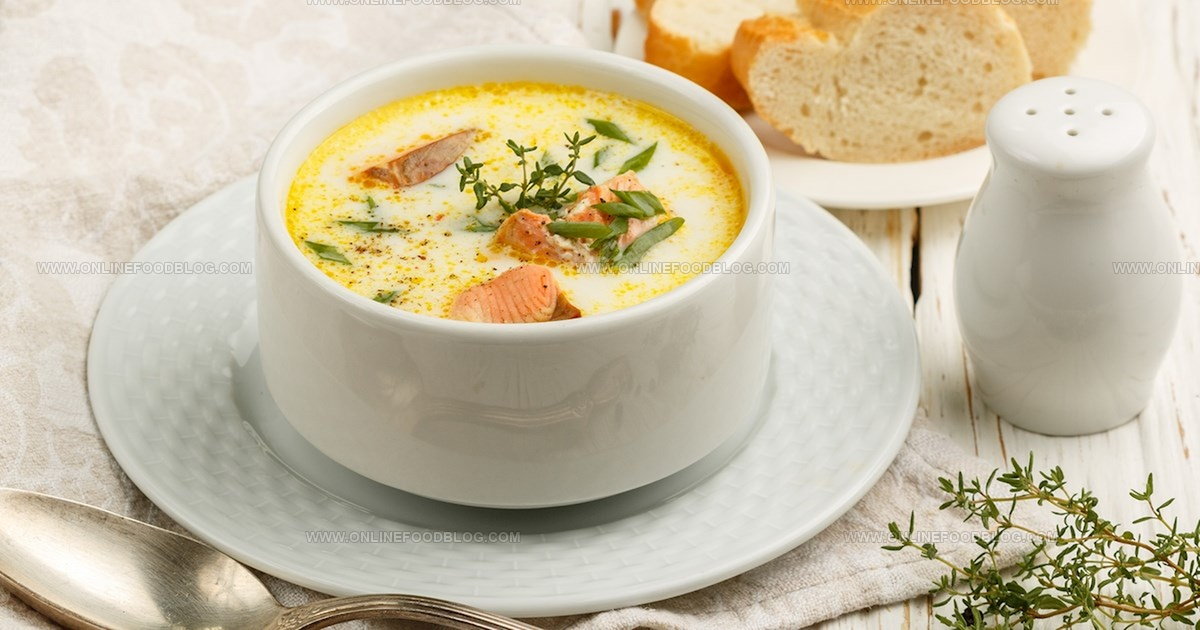
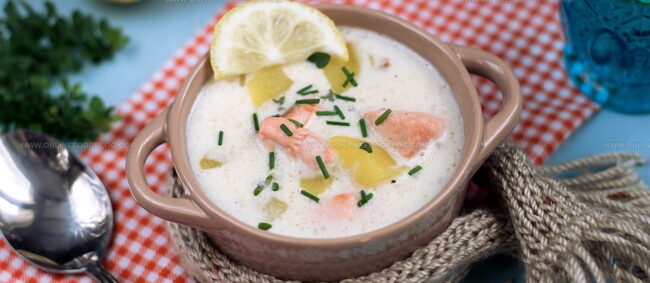

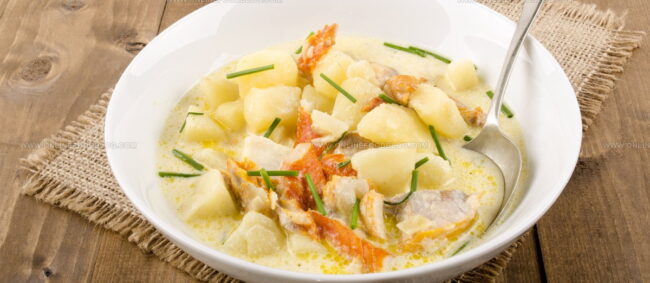
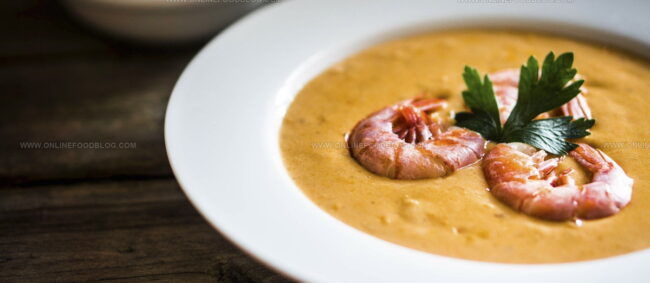
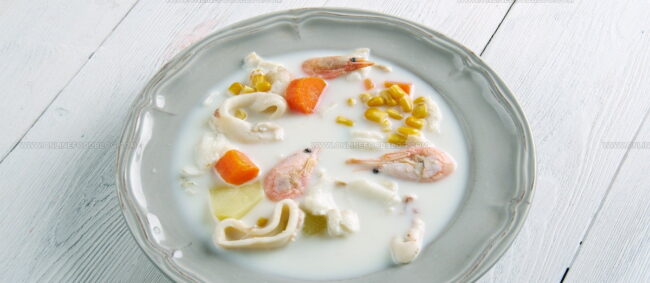
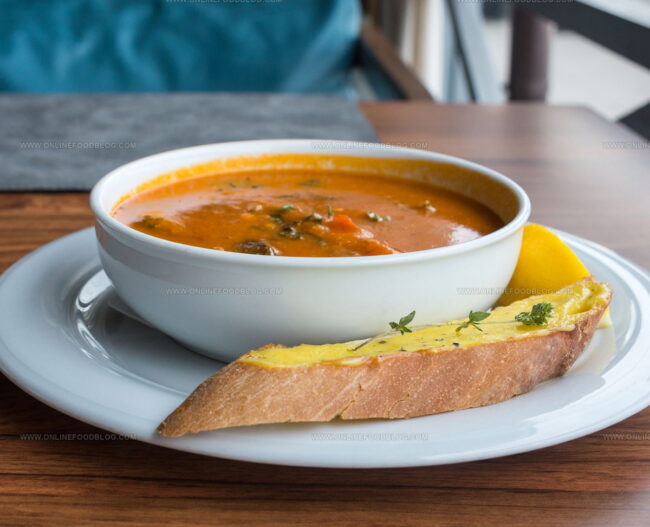
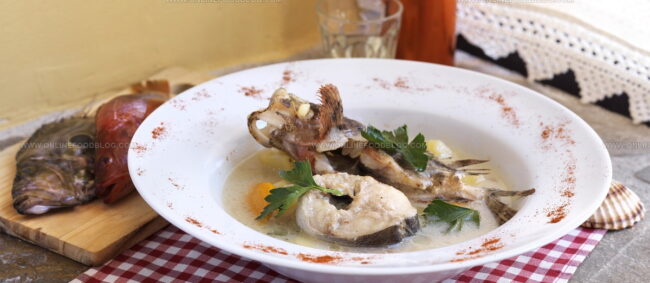
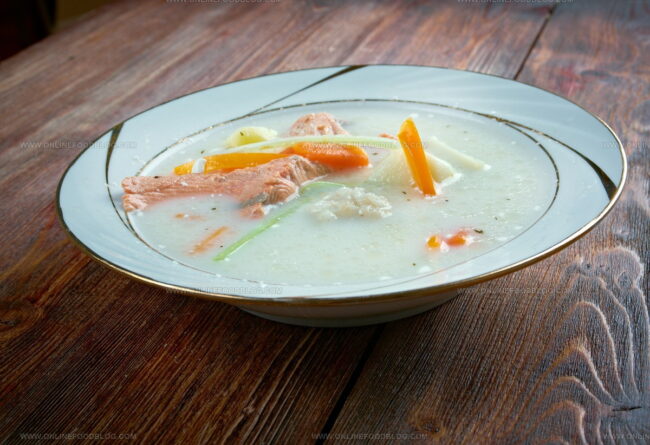
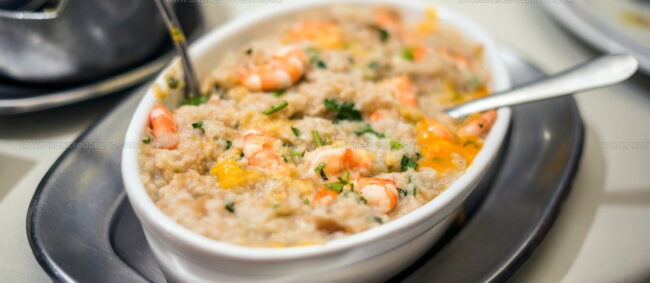
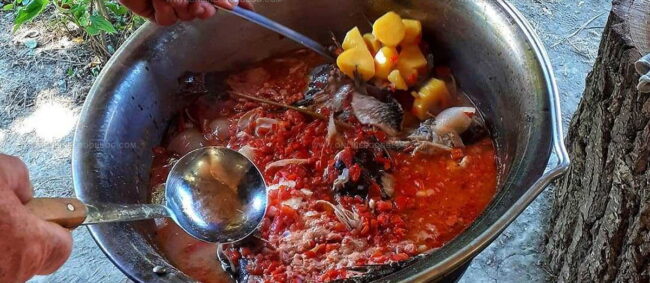
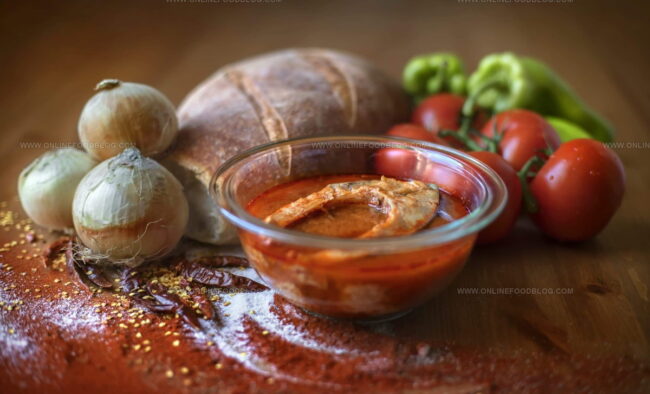
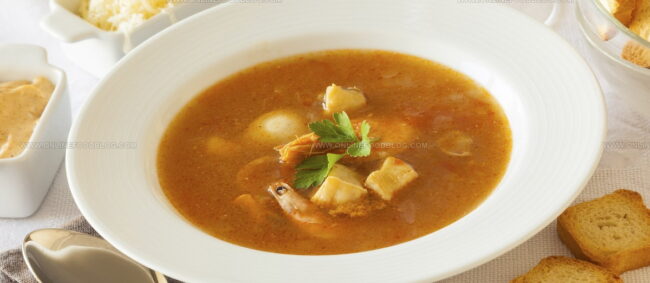
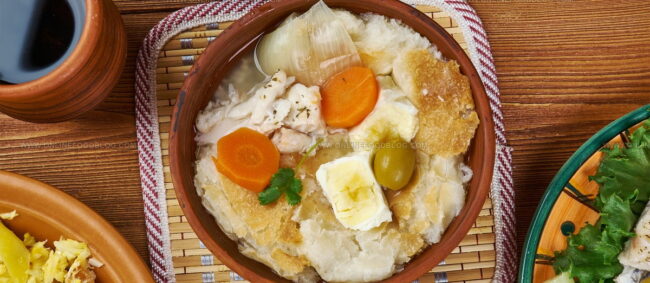
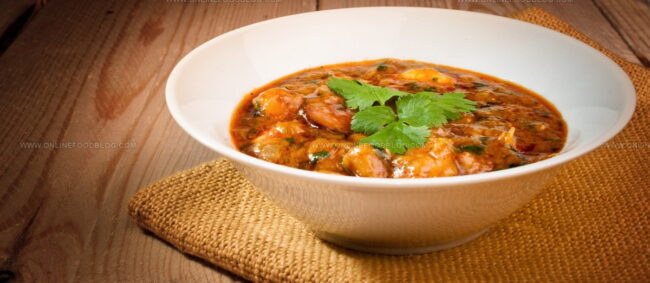
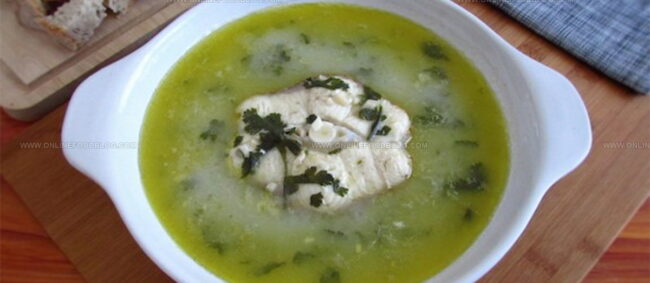
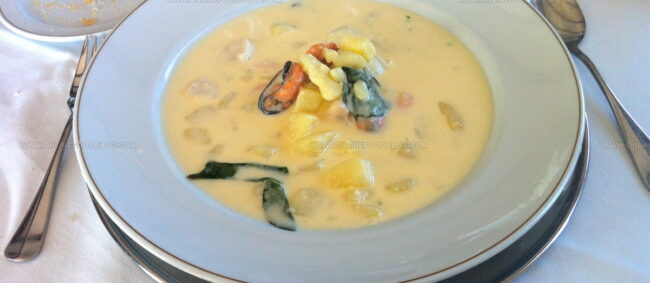
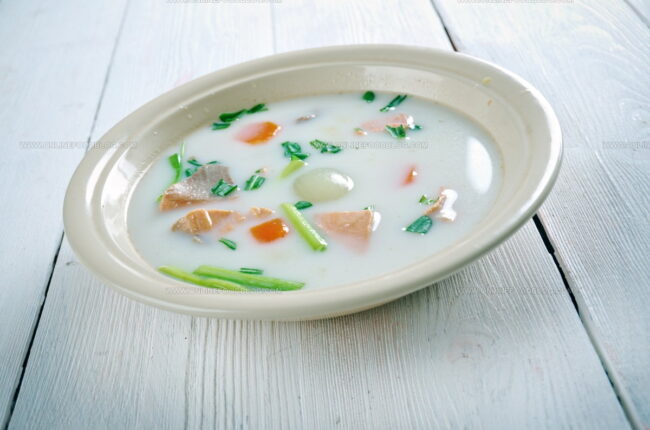
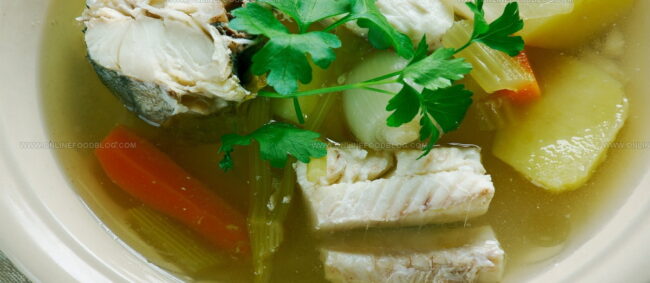
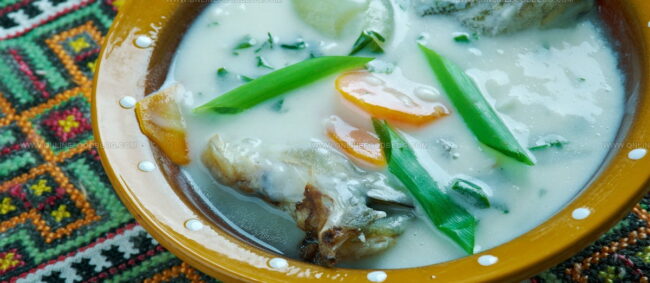
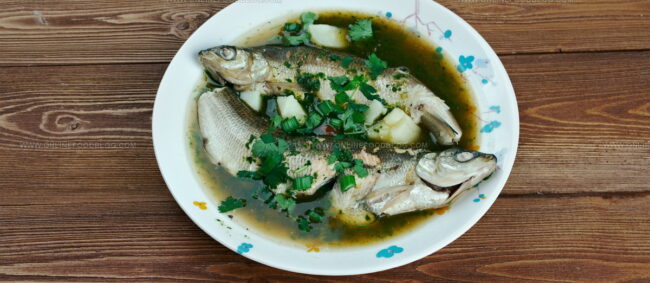
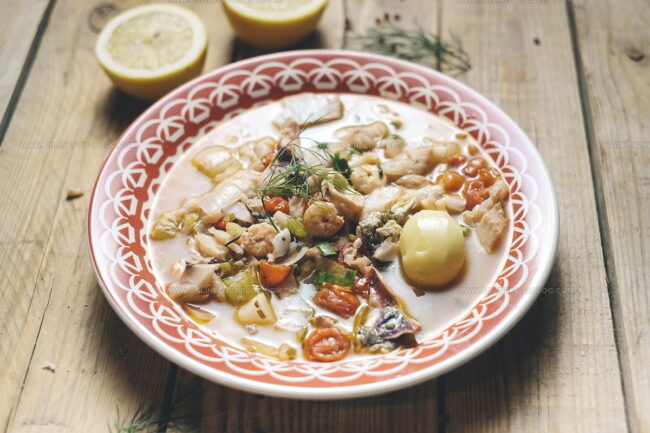
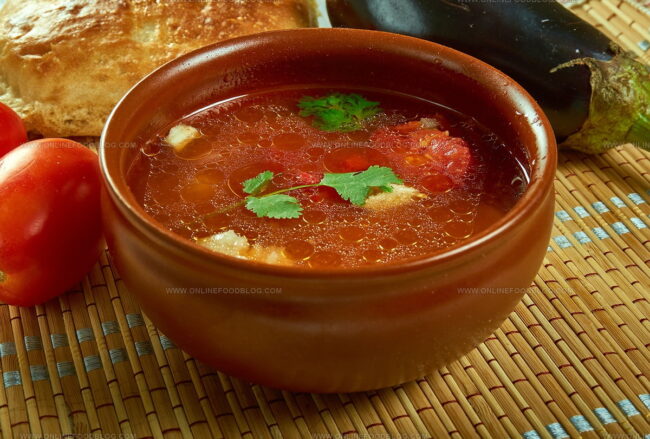
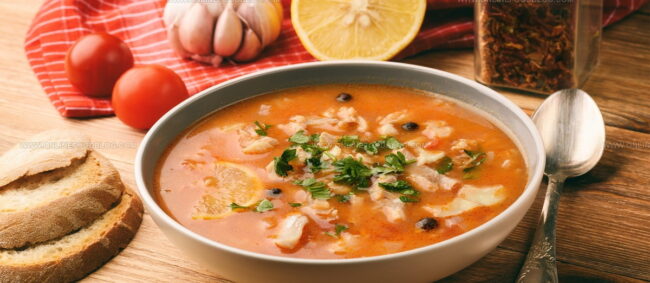
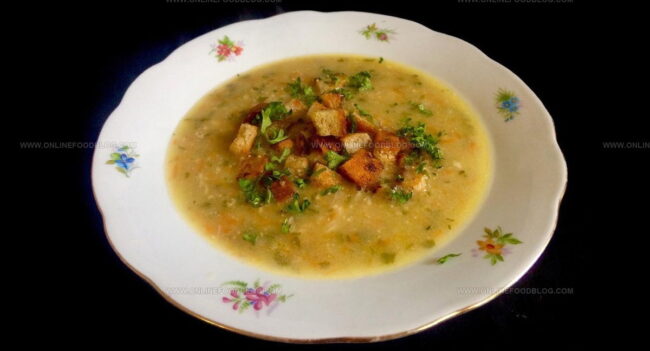
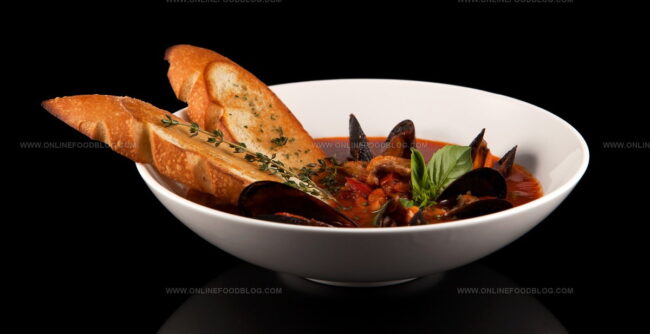
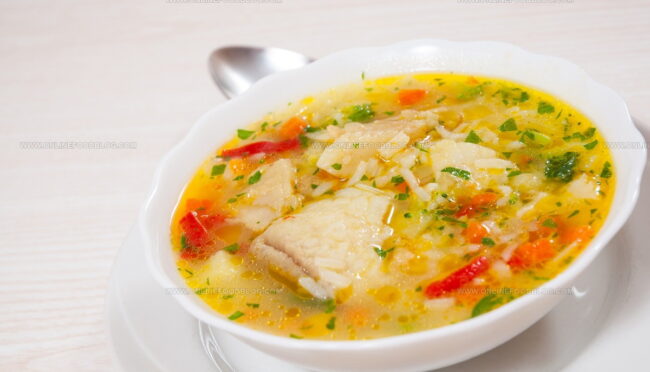
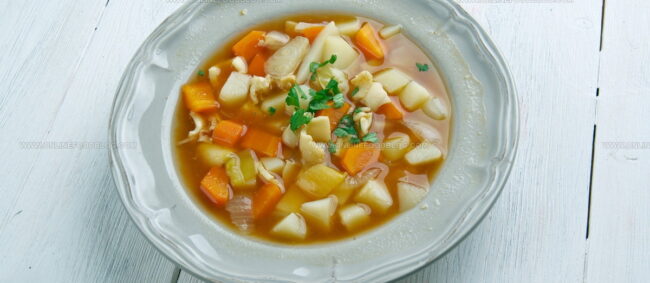
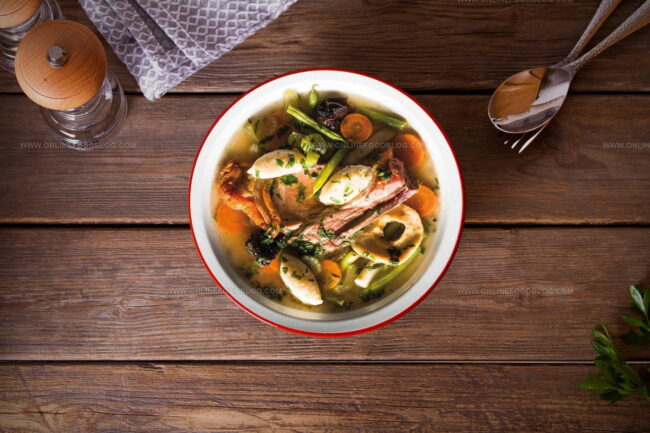
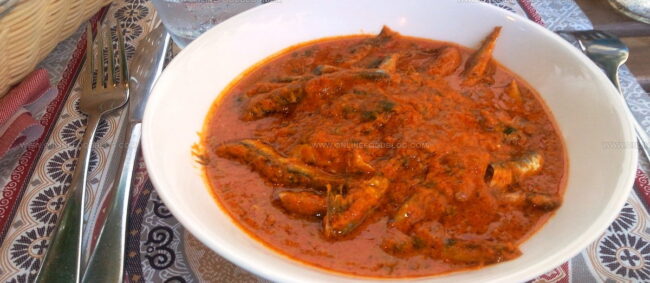
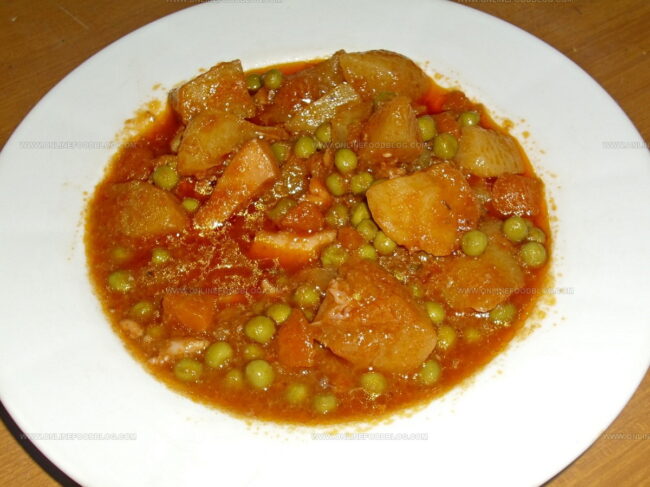
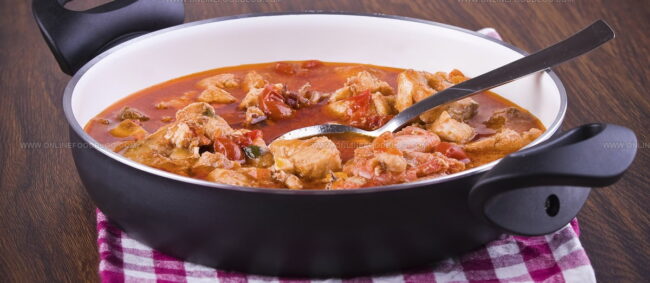
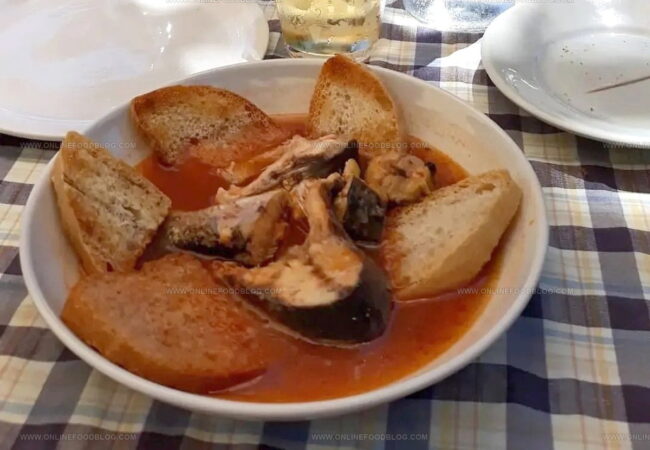
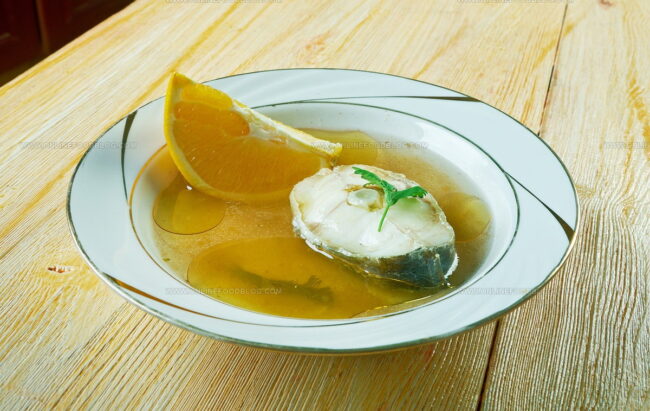
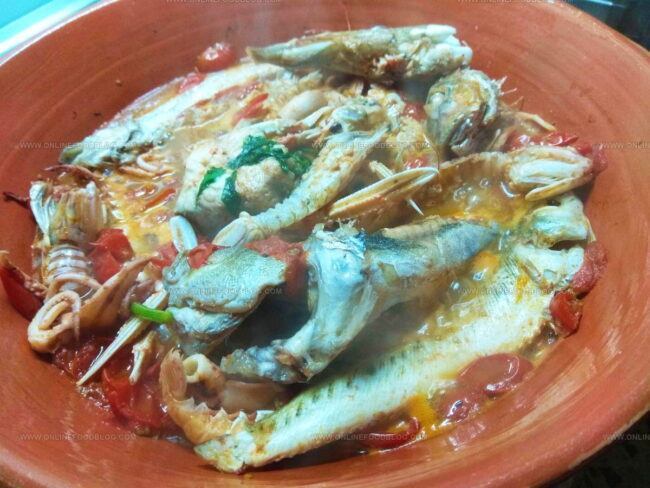
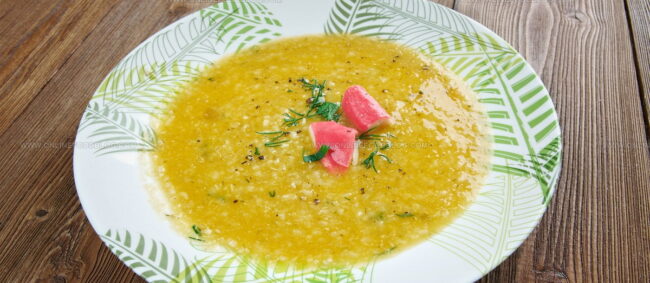
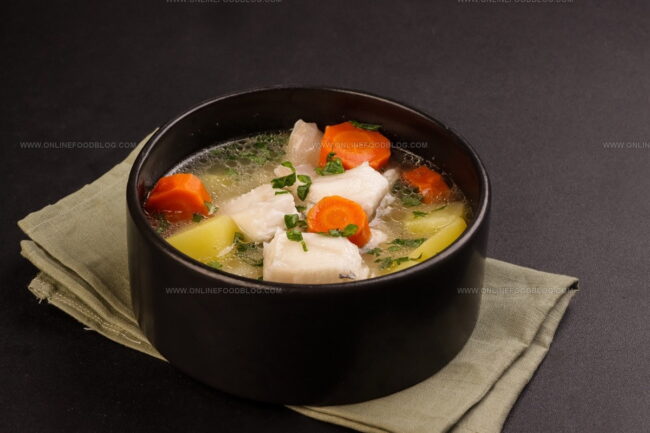
Lucas Bennett
Founder & Recipe Creator
Expertise
Simple Everyday Recipes, Sustainable Cooking Practices, Creative Meal Planning, Recipe Testing and Improvement
Education
Fox Valley Technical College, Appleton, Wisconsin
Lake Superior College, Duluth, Minnesota
Lucas Bennett’s cooking journey started in his parents’ kitchen, where he learned to prepare tasty, no-fuss meals from scratch. His culinary passion led him to Fox Valley Technical College, where he gained practical cooking skills.
He then expanded his focus on sustainability at Lake Superior College. Today, Lucas shares easy, approachable recipes designed to make cooking enjoyable and stress-free for everyone.